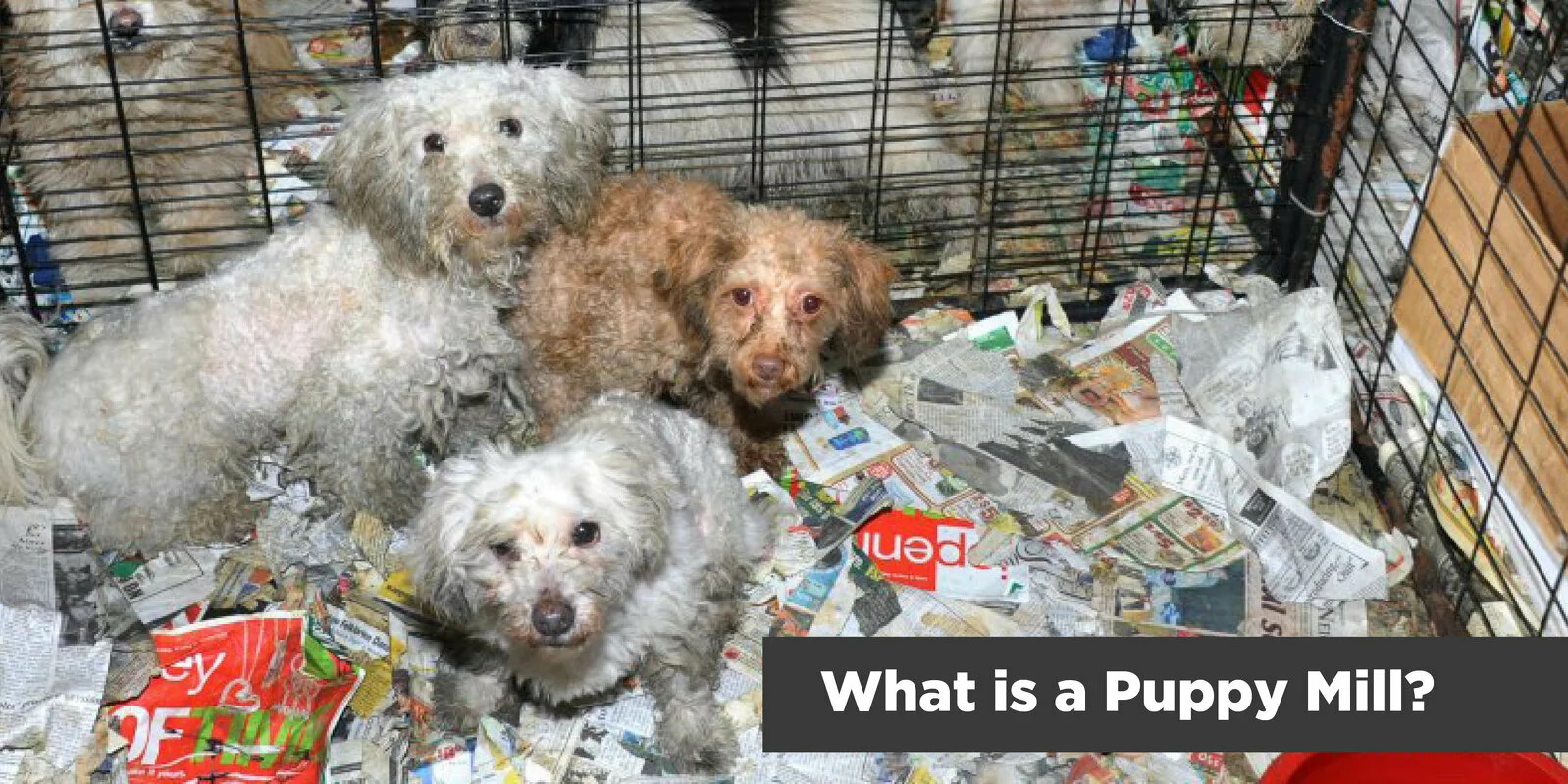What Happens When Puppy Mills Can’t Sell Their Dogs?
September is Puppy Mill Awareness Month. With pet intake in our shelters increasing due to the housing crisis and the challenging economy, puppy mills are experiencing a drop in demand. Adoptions are down in the shelters, and intake is up because community members are struggling. While adoptions have decreased, guess who else is having trouble moving pets? The puppy mill industry. After speaking with my friend Theresa Strader at National Mill Dog Rescue (NMDR), I wanted to share more about this alarming report and how it directly impacts our animal shelters.
Large-scale breeders, many of whom are what we consider puppy mills (breeding for profit only with no consideration for the welfare of the dogs), are finding that their sales are down. NMDR has worked for years with large-scale breeders to take in breeder retirees and unwanted dogs. Sadly, the demand to surrender dogs is growing, and NMDR is now seeing requests for the surrender of puppies due to breeders being unable to sell them. In the past, they would be contacted to take 4-5 adult dogs here and there. Recently, that number has drastically increased—Theresa told us that one request was for 45 puppies from one seller!
When I spoke with Theresa, I committed to having BISSELL Pet Foundation help NMDR in any way possible. One week later, we got the call from the NMDR team that another breeder was surrendering more than 70 dogs; 50 of those were puppies they were unable to sell. All of these dogs are highly adoptable “doodles.”
We called in Wayside Waifs, part of BPF’s National Shelter Alliance, and they sent a team to meet Theresa and take the 50 puppies (all adults went to National Mill Dog Rescue). Wayside Waifs transferred some of the pups to two other Alliance members, Humane Society of Missouri and Animal Protective Association of Missouri. These pups were in good condition, and most have already been adopted.
I hope that part of the reason the dogs were not sold by the puppy mill is that our messaging is working. We have been telling buyers not to purchase a puppy unless they can go to the property, ask to see all the dogs, and feel comfortable about the environment. For this reason, purchasing from a pet store, parking lot, or anywhere off–property should be a red flag. Did these puppies not sell because the public is getting savvier, the cost was too high because the housing market is impacting all pets, or a combination of all?
It’s essential to understand this issue exists because these puppy millers are mass-producing puppies, not breeding dogs. Responsible breeders could be experiencing a slowdown in demand, but you won’t find them surrendering all their dogs to animal shelters. They don’t produce hundreds of puppies at one time. They breed in a controlled environment, considering the welfare of the dogs and puppies in their care. So, a slowdown in demand has minimal impact on them because they don’t have hundreds of puppies to sell at once.
By contrast, puppy mills keep mass-producing puppies until they can’t sell them. Where do all those puppies go when their markets decline? Animal shelters and rescues will bear the brunt of the overflow. Even though our shelters are struggling, this influx of dogs and puppies may actually help get people to visit shelters. Wayside Waifs, Humane Society of Missouri and Animal Protective Association will experience additional foot traffic because they have these puppies available for adoption. Some dogs that were already in the shelter may get adopted by families that thought they were interested in the puppies until their eyes met those of the perfect dog.
Can puppy mill surrenders help our shelters? In some cases, yes. Shelters that have the resources can work a puppy mill surrender into a benefit for all the pets in the shelter. Many shelters report placing dogs from puppy mill cases or surrenders at the back of the shelter, making it impossible to see them without passing every available dog. But let’s not forget the nationwide veterinary shortage and staffing issues. It is certainly not the ideal situation for Wayside Waifs or any shelters to take in many pets at this time, even if they are all highly adoptable. This is why we must work together to address what looks to be a future trend for shelters: Large puppy mill surrenders.
So, what should we do next?
Communicate. First, shelters must strengthen intrastate relationships as well as regional relationships. In most cases, puppy mill dogs are fostered or adopted quickly, but getting them in the door is complex when the shelter is already full. By working together, shelters can spread the dogs out as much as possible to lessen the impact on one organization. Collaboration is everything as we work through the current crisis the industry is facing.
Have a plan. A large influx of pets should be part of your disaster plan. What would you do tomorrow if faced with 50 dogs coming into your shelter? Who would you call for help? Who are your partners in the state and who are their partners? These are all vital pieces of information. Find your partners before a crisis occurs. If you are a shelter without a disaster plan, please email our Director of Shelter Outreach, Kim Alboum at Kim.Alboum@Bissell.com. We can help!
Get to know your local puppy mills. Finally, situational awareness is important. Most of you know where to locate your community’s puppy mills. Communicate with them—yes, you read that correctly. Pay a visit, make a call. Are they declining and in need of help? If you know it is coming you can plan, perhaps take them in smaller groups. Maybe you can help them sustain the dogs and puppies until there is a plan in place.
Our industry mission is to help pets. Preventing suffering often means working with those we may not agree with. I know this is not always easy, but the reward is great when we can improve the lives of animals.

